Cautious Optimism as New 2023 Data Suggests Progress in Addressing the STI Epidemic
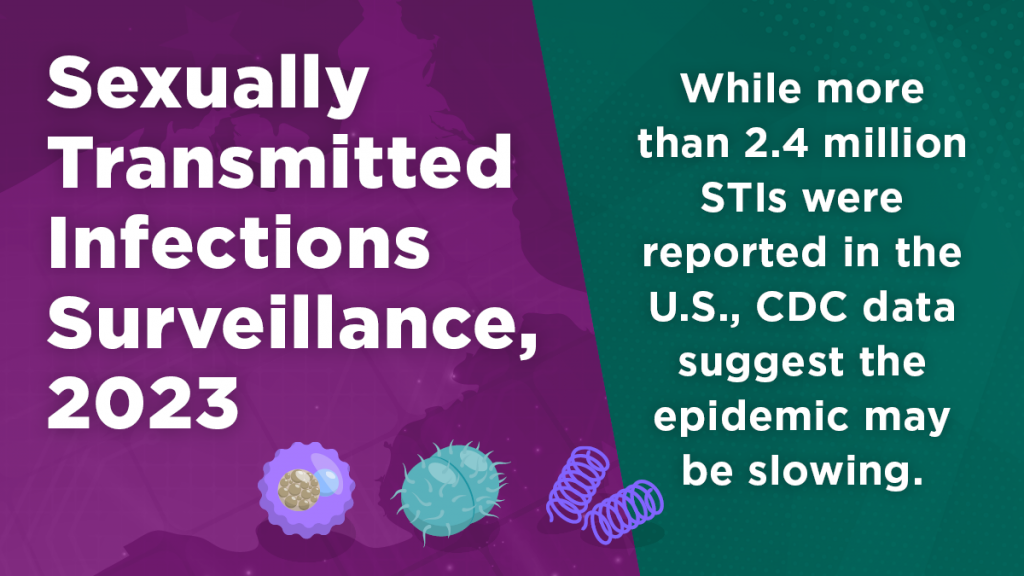
The Centers for Disease Control and Prevention (CDC) just released the 2023 Sexually Transmitted Infections (STI) Surveillance report and for the first time in a long time the data is encouraging. There were fewer STIs reported in the United States last year than the year before; gonorrhea rates fell, chlamydia rates remained stable, and syphilis rates leveled off with only a 1% increase.
This is encouraging and suggests that our public health response to STIs—including new prevention methods and increased testing and treatment—are working. The report, however, is not all good news. Reportable STIs are still 90% higher than 20 years ago, and congenital syphilis is still 7 times higher than a decade ago. Severe disparities also remain with certain groups and geographic areas continuing to be disproportionately affected by the STI epidemic.
Promising Findings
- There were 2.4 million STIs reported in the United States in 2023 which represents a 1.8% decrease from 2022.
- Gonorrhea cases dropped by 7% from 2022. This is the second year in a row when gonorrhea cases were down.
- Total syphilis cases increased by only 1% after years of double-digit increases, and cases of primary and secondary syphilis declined for the first time in more than two decades (down 10% since 2022).
- Primary and secondary syphilis cases dropped 13% among gay and bisexual men for the first time since CDC began reporting national trends among this group in the mid-2000s.
- Nationally, cases of congenital syphilis increase slightly (3%) compared to 30% annual increases in recent years.
Ongoing Challenges
- In 2023, almost half (48.2%) of reported cases of chlamydia, gonorrhea, and syphilis were among adolescents and young adults aged 15–24 years.
- In 2023, MSM accounted for 57.5% of primary and secondary syphilis cases among men with known sex of sex partners.
- In 2023, 32.4% of all cases of chlamydia, gonorrhea, and primary and secondary syphilis were among non-Hispanic Black or African American persons, even though they made up only 12.6% of the U.S. population.
- In 2023, there were 3,882 cases of congenital syphilis, including 279 congenital syphilis-related stillbirths and neonatal/infant deaths. This is the largest number of cases of congenital syphilis since 1992.
- Congenital syphilis cases remain highest among American Indian or Alaska Native persons.
These disparities are not about personal behavior. Instead, they stem from societal factors like poverty, stigma, racism, lack of health insurance, and lack of access to quality health care. Until we address the root causes of health disparities, these communities will continue to have higher prevalence of STIs and worse outcomes.
The data suggest that we are on the right track. Increased testing (including the availability of at-home testing), and the introduction of doxy PEP (the use of doxycycline to prevent bacterial STIs) seem to be helping curb the epidemic.
But we can’t stop here, we need to increase prevention, testing, and treatment efforts for everyone. We also need to increase access to prenatal care and syphilis testing during pregnancy to prevent the devastating impact of congenital syphilis on families and communities.
Now is the time to invest in our public health system, increase our workforce, and make STI services more accessible in all communities.
More to Explore

Testing for Sexually Transmitted Infections—How It Works
Many STIs have no signs or symptoms in the majority of people infected. The only way to know if you have an STI is to get tested.
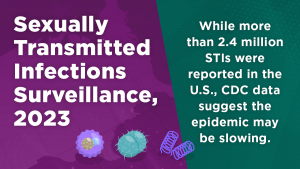
Cautious Optimism as New 2023 Data Suggests Progress in Addressing the STI Epidemic
CDC just released the 2023 Sexually Transmitted Infections (STI) Surveillance and for the first time in a long time the data is encouraging.
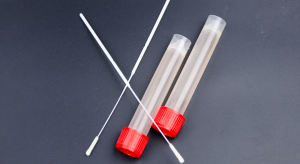
A Truly At-Home Test for Bacterial STIs Does Well in Trials
A completely at-home PCR test for chlamydia, gonorrhea, and trichomaniasis could allow people to test themselves and get results and treatment within a matter of hours.

HHS Recognizes Herpes as a Priority in the STI National Plan
The STI National Plan has now been amended to add genital herpes as a priority.

Should we be recommending STI testing for all sexually active heterosexual men?
Widespread screening for STIs in heterosexual men is deemed “not cost effective.” Should we reconsider?

September 30 is National Get Tested Day
ASHA has declared September 30 as National Get Tested Day—a day to raise awareness about the importance of getting tested for sexually transmitted infections.
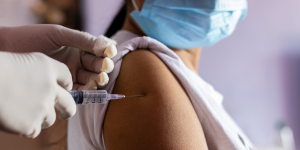
HPV Vaccination Rates Among Teens Not Going Up
For the second year in a row, HPV vaccination rates among teens have not gone up according to the Centers for Disease Control and Prevention (CDC).
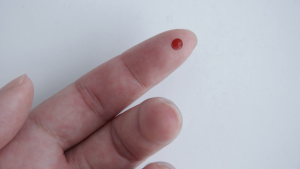
FDA Approves First At-Home Syphilis Test
The FDA recently approved an at-home test for syphilis that can provide initial results in just 15-minutes. Syphilis has been surging in recent years with the number of cases rising 80% between 2018 and 2022 alone.
The post Cautious Optimism as New 2023 Data Suggests Progress in Addressing the STI Epidemic first appeared on American Sexual Health Association.





